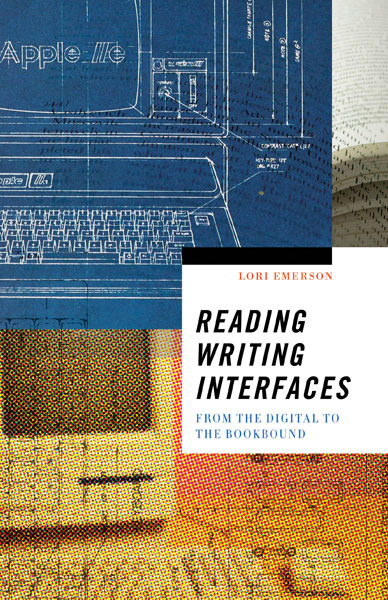Reading Writing Interfaces: From the Digital to the Bookbound
In Reading Writing Interfaces, Lori Emerson examines how interfaces—from today’s multitouch devices to yesterday’s desktops, from typewriters to Emily Dickinson’s self-bound fascicle volumes—mediate between writer and text as well as between writer and reader. Following the threads of experimental writing from the present into the past, she shows how writers have long tested and transgressed technological boundaries.
Table of Contents:
Introduction
Chapter 1: Indistinguishable From Magic | Invisible Interfaces and Digital Literature as Demystifier
Chapter 2: From the Philosophy of the Open to the Ideology of the User-Friendly
Chapter 3: Typewriter Concrete Poetry and Activist Media Poetics
Chapter 4: The Fascicle as Process and Product
Chapter 5: Postscript | The Googlization of Literature
Works Cited
The iPad works because users can’t know how it works. 15
the user-friendly now takes the shape of keeping users steadfastly unaware and uninformed about how their computers, their reading/writing interfaces, work, let alone how they shape and determine their access to knowledge. 49
Works referenced:
|
Title |
Author | Year |
|---|---|---|
| What They Speak When They Speak to Me | Jason Edward Lewis | 2007 |
| [theHouse] | Mary Flanagan | 2006 |
| _cross.ova.ing 4rm.blog.2.log 07/08 XXtracts_ | Mez Breeze | 2010 |
- ‹ previous
- 2 of 2
Critical writing referenced:
- ‹ previous
- 2 of 2


